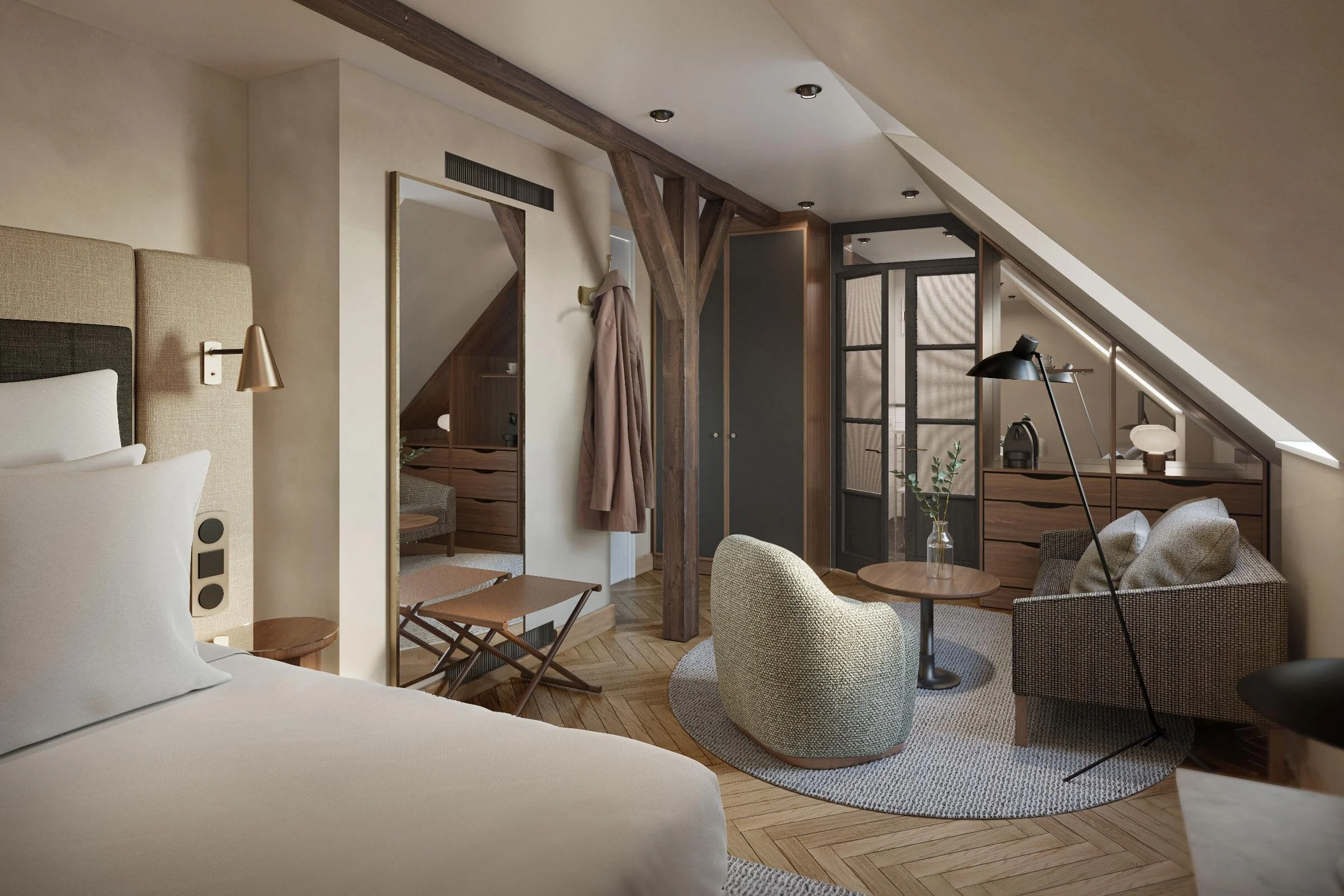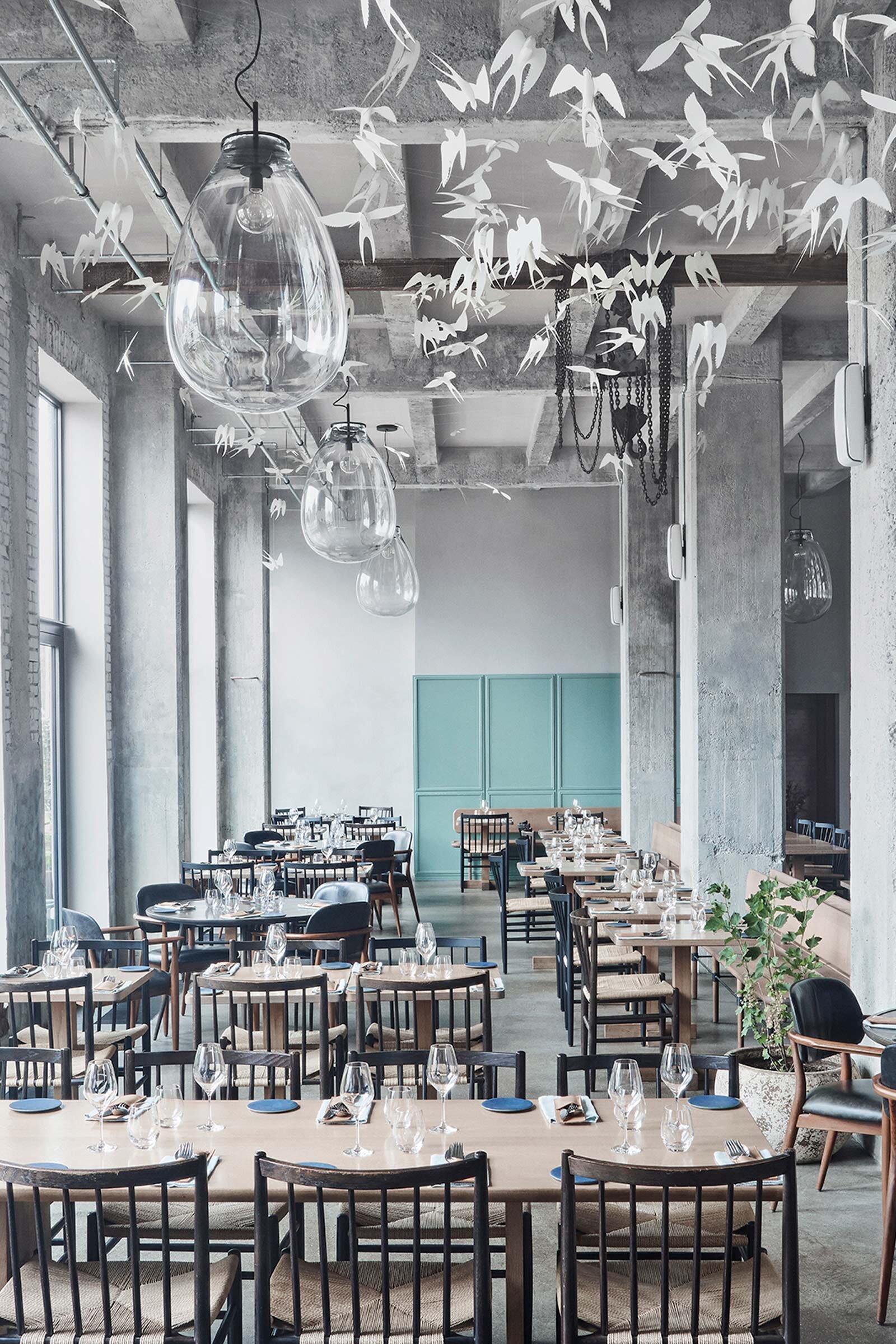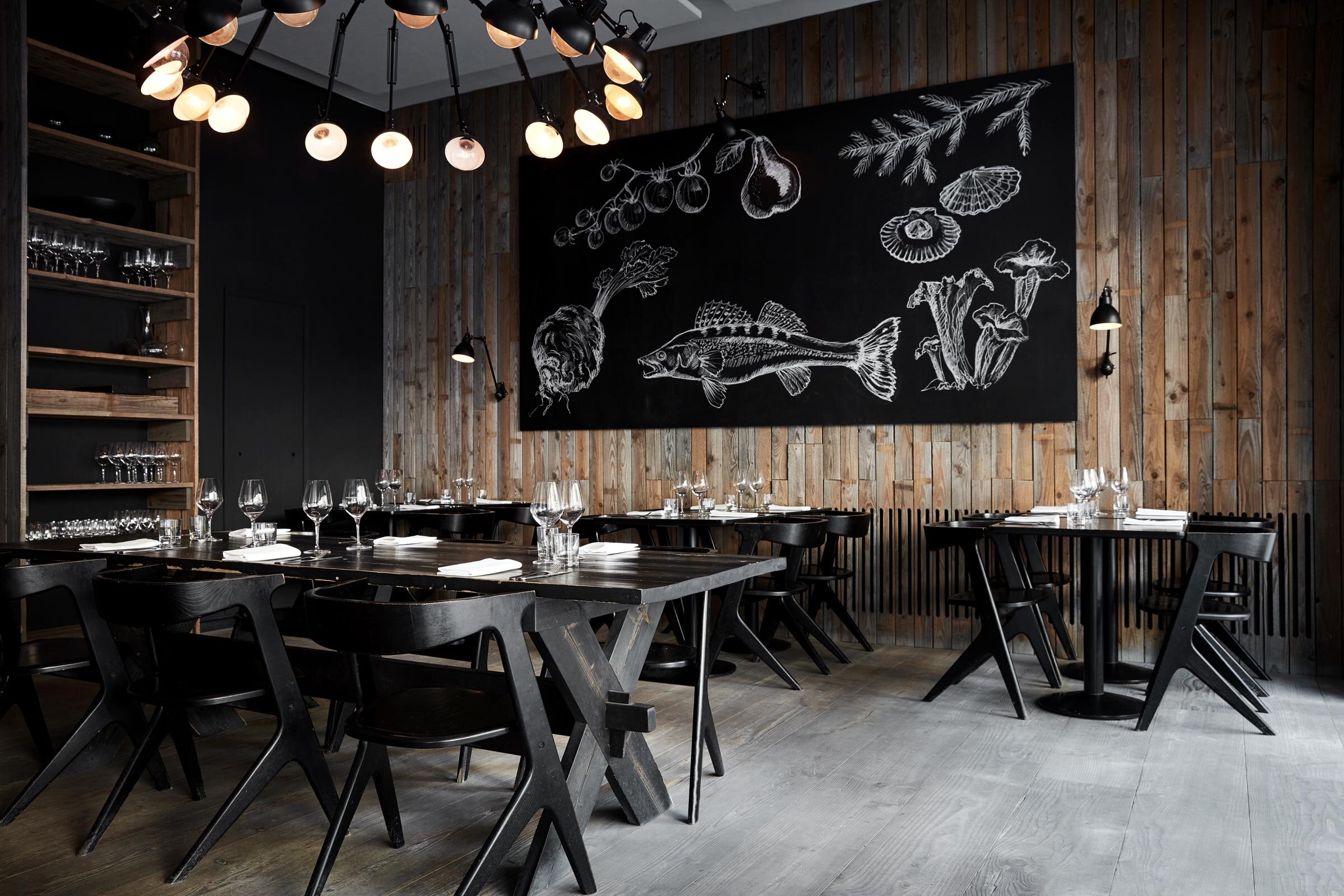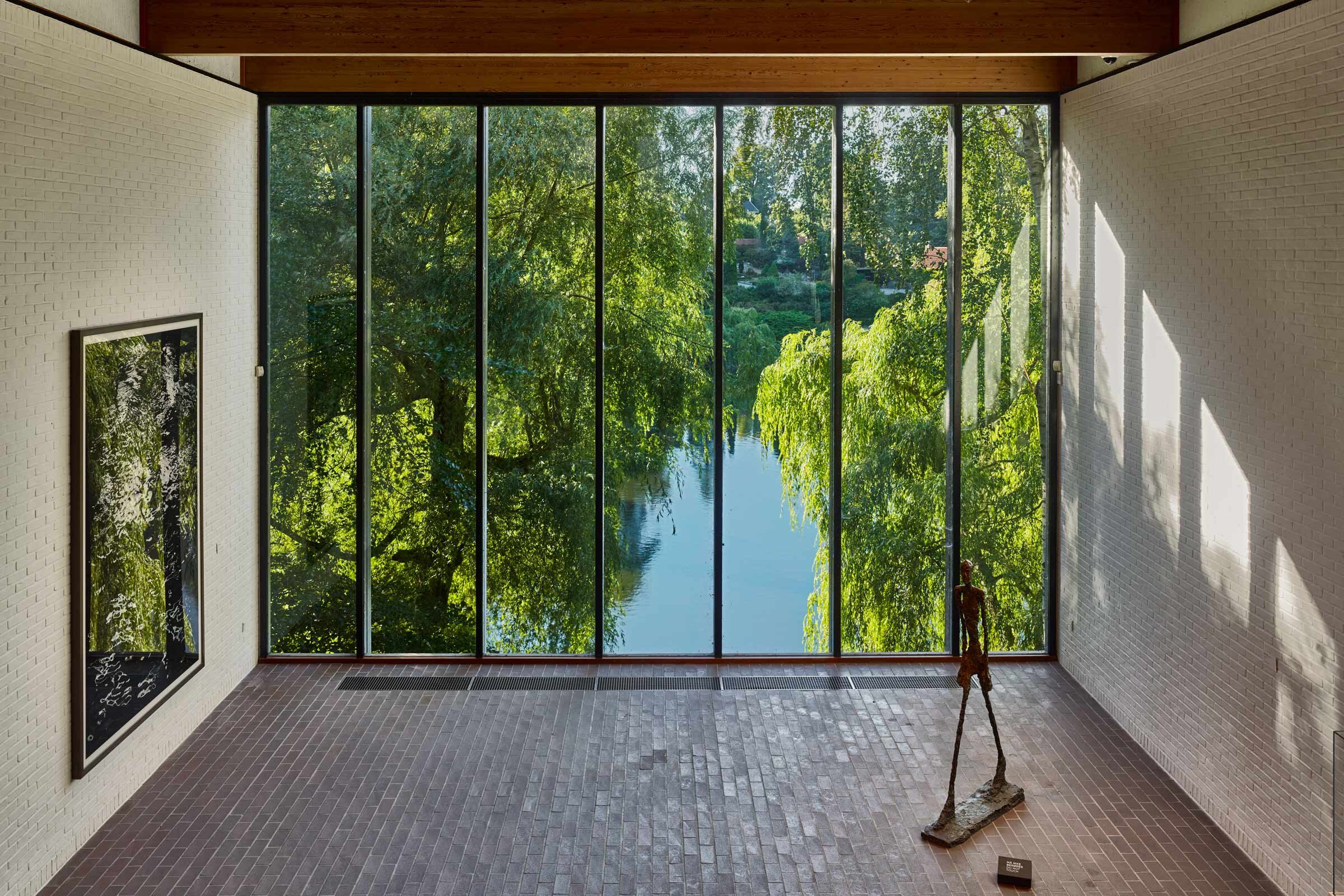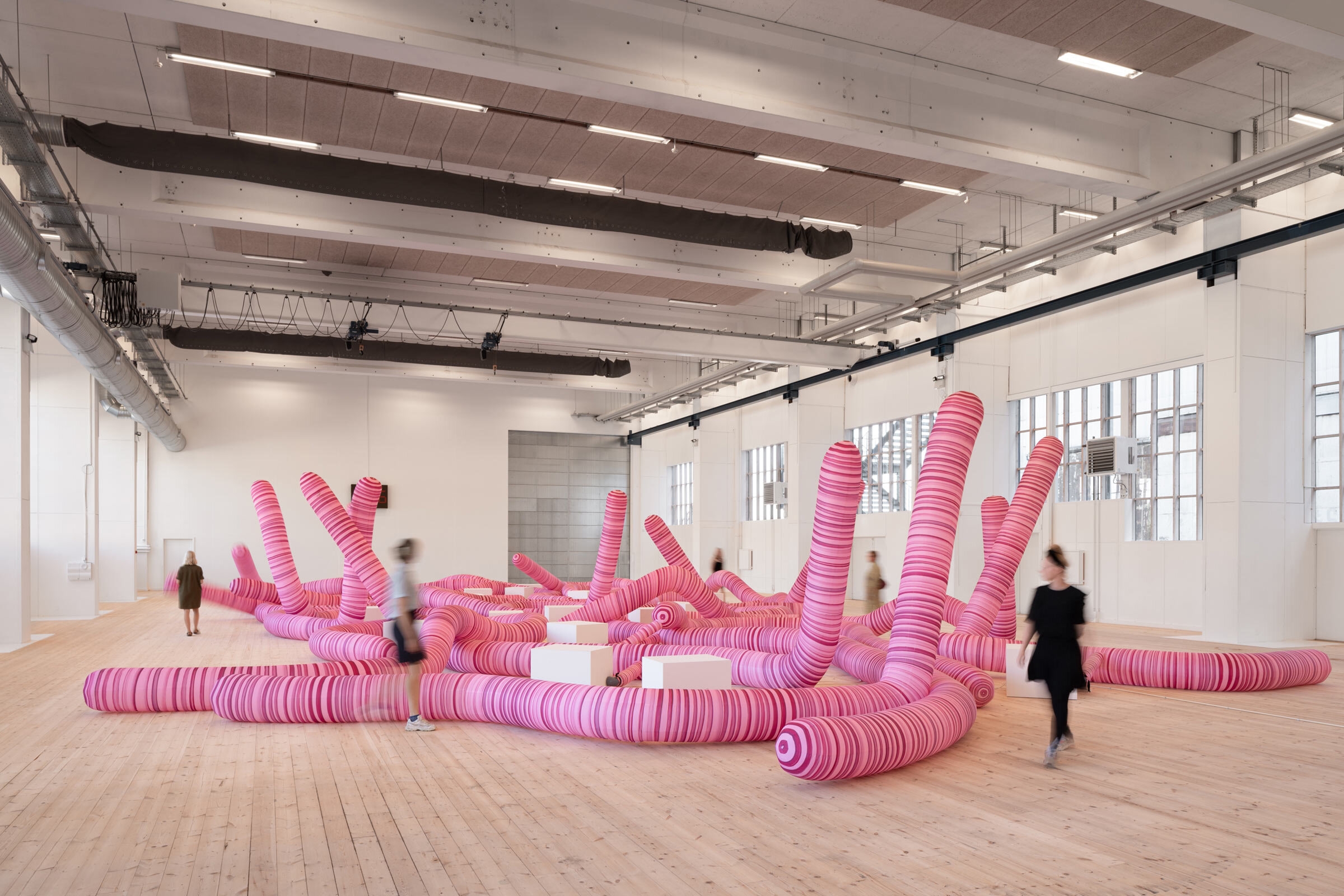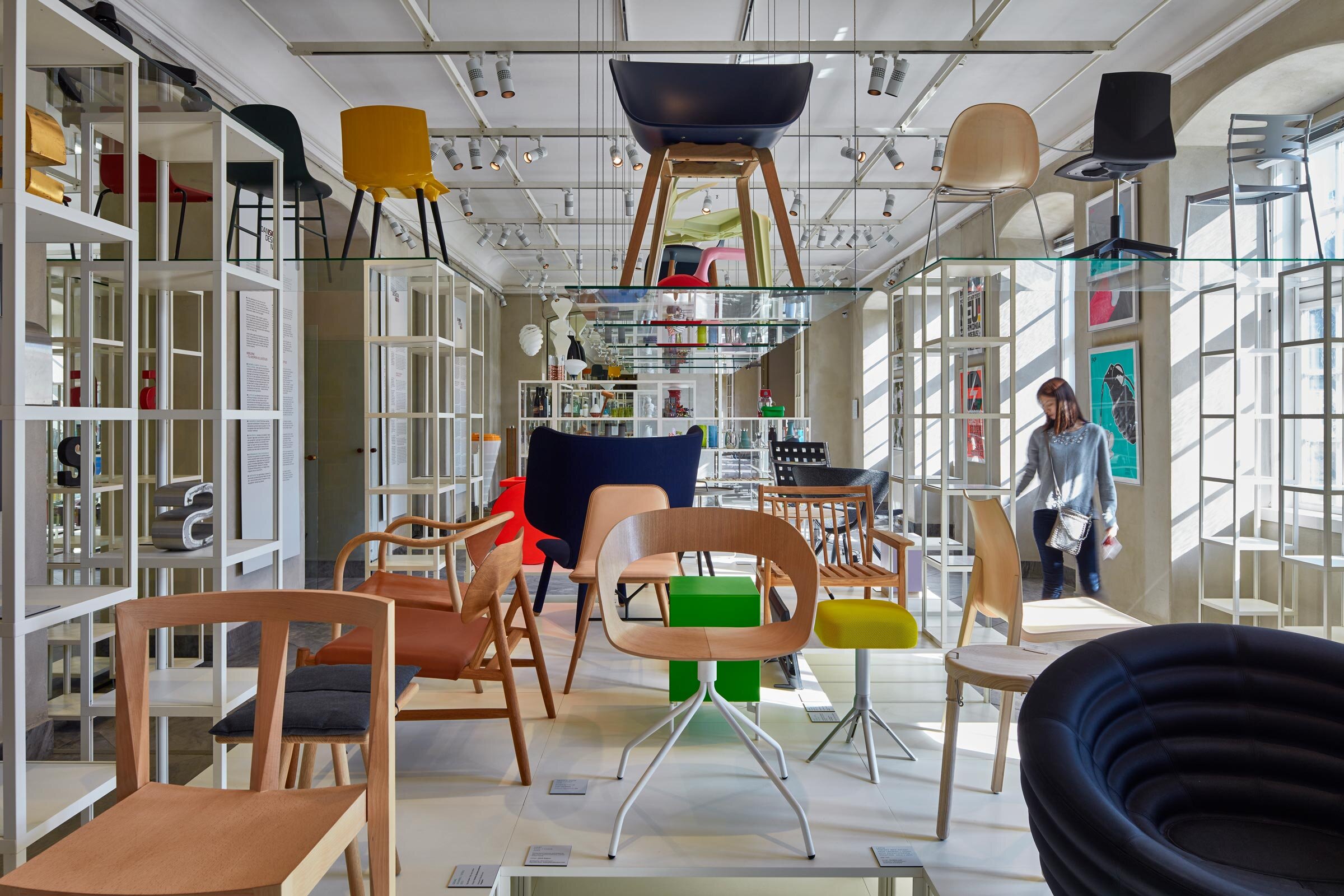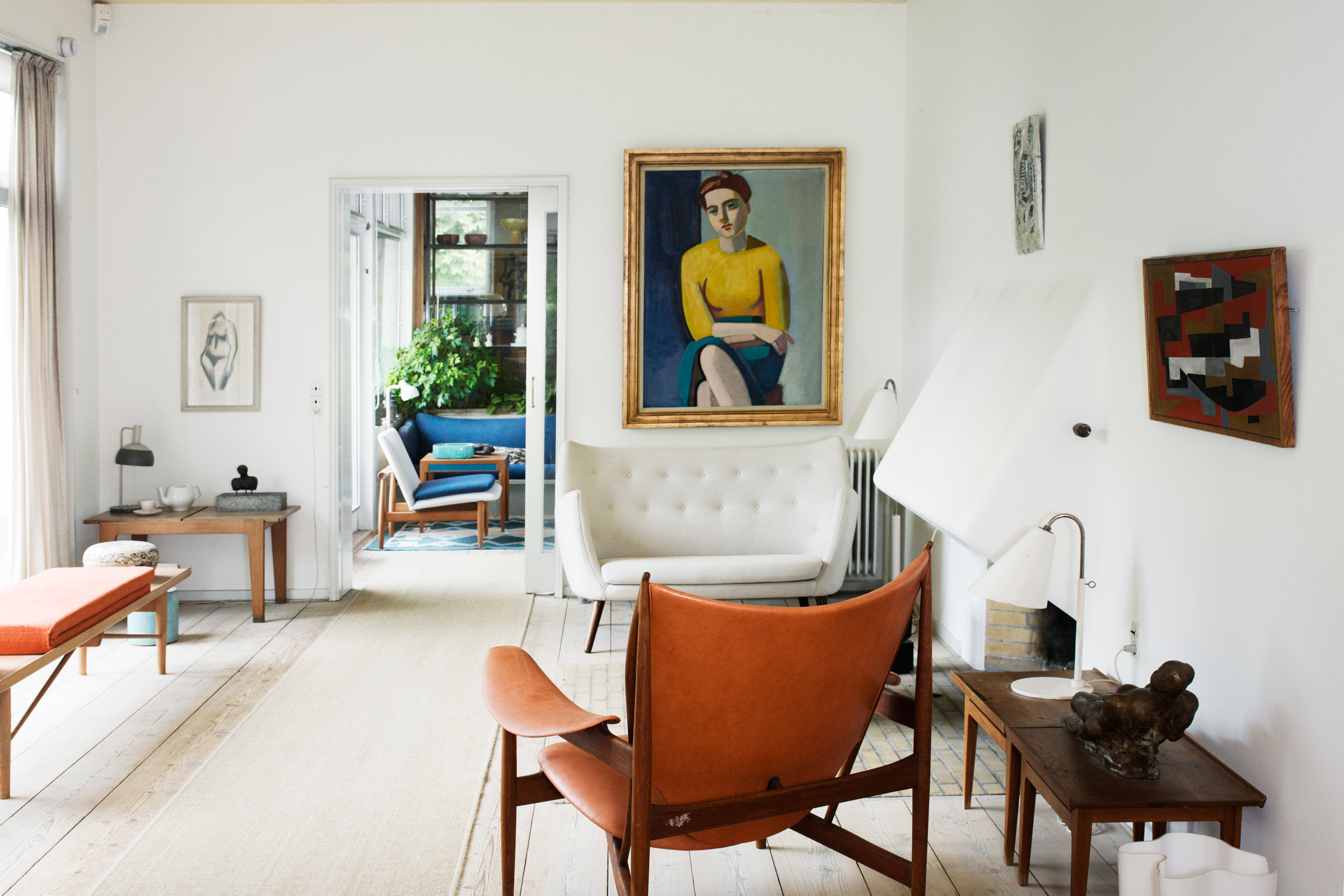The Designer’s Guide to Copenhagen
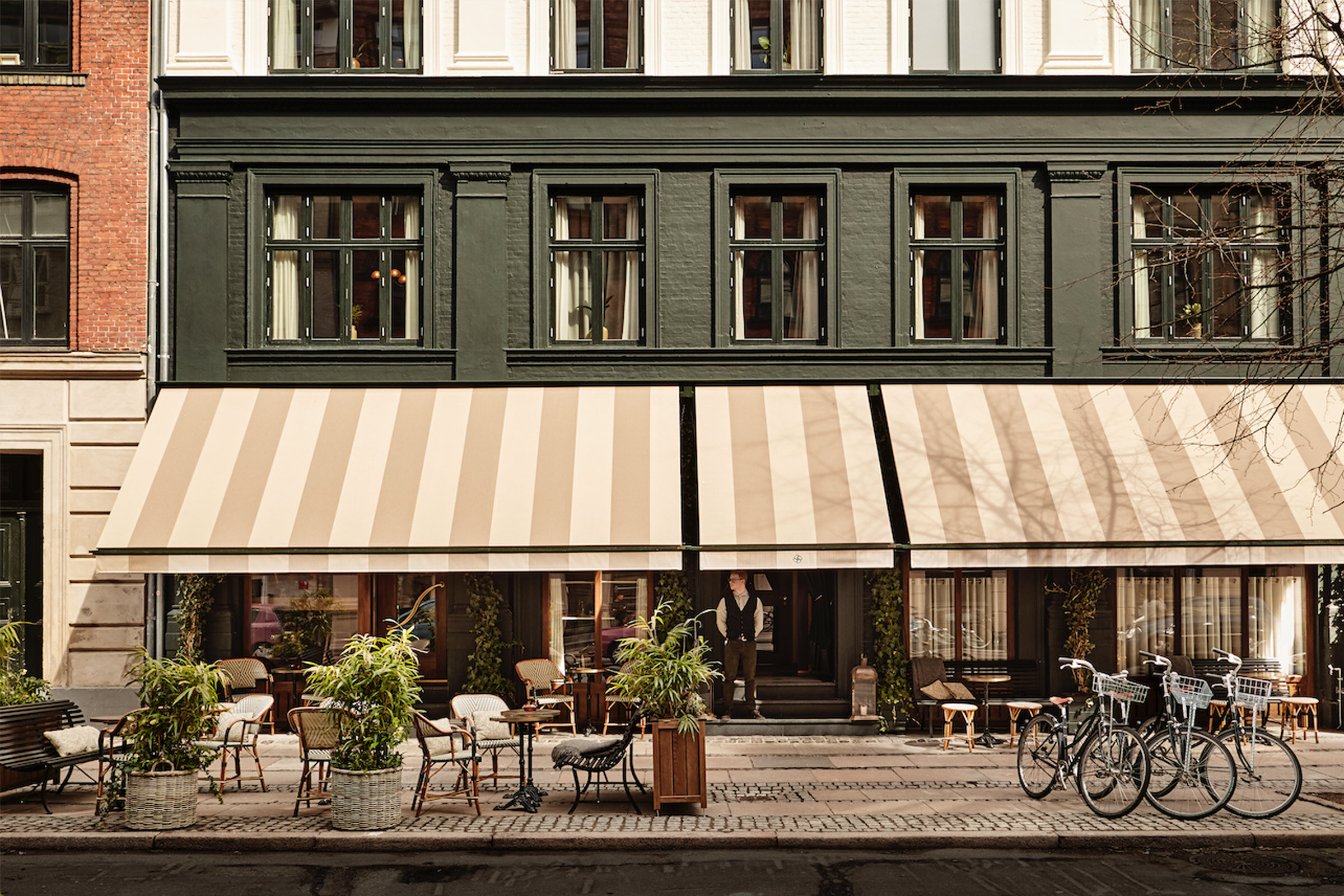
If you’re heading to Copenhagen for 3daysofdesign, or if you’re just looking for some armchair travel inspiration, we’ve rounded up more than a few of our favourite places to stay, shop, eat, drink and see in this comprehensive city guide
While Copenhagen’s charms are not lost on foodies and design lovers, the city has flown somewhat lower on the radar compared to other European destinations — but this is slowly changing. The Danish capital is considered one of the fastest growing cities for tourism, and it's not hard to see why. Ha en god tur!
Text / Suzy Annetta
Villa
Image by Stine Christiansen
Where to Stay
Villa is relatively new to the Danish capital, and is housed in the refurbished historic former Central Post and Telegraph Company building, which neighbours København central train station in the heart of the city. Rooms have been designed with a modern Scandi feel by London-based Universal Design Studio.
The Audo is a hybrid of hotel, cafe and restaurant, concept store, library and co-working space. The brainchild of Bjarne Hansen, founder of Danish furniture brand MENU, the space was designed by Norm Architects and co-curated by Nathan Williams of Kinfolk. The restored merchant’s house in Nordhavn, a former industrial neighbourhood, is one of the oldest buildings in the area. You can read more about The Audo in this story from the first issue of Design Anthology Australia.
One of the most photogenic hotels in the city, Hotel SP34 belongs to the Brøchner Hotels group (which boasts five other equally covetable locations across the city) and is so good looking you might struggle to leave your room to go and explore the city.
The boutique 54-room Hotel Sanders — a member of Soho House’s Cities Without Houses Network — is spread across three 19th-century townhouses in the historic city centre, with interiors by Danish-British duo Lind + Almond.
Centrally located Nobis Hotel is housed in what was one of Copenhagen’s first concrete structures, which used to be occupied by the Royal Danish Academy of Music. The hygge-inducing interiors were created by Swedish firm Wingårdh Architects.
The Coco Hotel, a lovely little gem of a place in the Vesterbro neighbourhood, is the latest outpost by the Cofoco restaurant group. It’s location on the edge of The Lakes makes it the perfect spot to take off on a morning run from, if you want to truly feel like a Dane.
A classic with real design pedigree is the Radisson Collection Royal Hotel. Originally the SAS Royal Hotel, designed by the iconic Arne Jacobsen in 1960 to become the world’s first ‘design hotel’, it’s been given a sympathetic makeover by local design firm Space Copenhagen.
The Audo
Hotel Sanders
Coco Hotel
Coco Hotel
Coco Hotel
Where to Shop
One of our favourite spaces in the whole city is the studio-showroom of aesthete Olivier Gustav. It’s fittingly located in a former private gallery space with breathtaking skylights that perfectly illuminate Gustav’s unorthodox and anachronistic mix of furniture, accessories and objet d’art.
The iconic jewellery label Monies was established by Danish goldsmiths Gerda and Nikolai Monies, who are known for their bold forms, tribal influences and use of raw natural materials that result in timeless and chic avant-garde pieces.
The reputation of The Apartment — a bijou space in an 18th-century building in the Christianshavn neighbourhood — precedes it. And it’s just as its name suggests: a space kitted out with the eclectic finds of ex-Sotheby’s Tina Seidenfaden Busck to look and feel just like a private home. In fact, they’ve taken that concept one step further recently, now allowing a limited number of people to book in for a night or two at the apartment.
A lovely store worth a visit is Aiayu, established by designer Maria Høgh Heilmann. The name means ‘soul’ in the Aymara language of Bolivia, where many of the pieces are made, all entirely from natural fibres and natural dyes.
Local fashion designer Jan Machenhauer creates timeless, architecturally inspired clothing pieces that are reminiscent of Italian or Japanese design, but are ultimately very Danish. The small store on Nikolaj Plads is charming and worth a visit.
Danish designer Mark Kenly Domino Tan designed his first dress for the Danish royal family when he was only twelve years old, and is today known for his use of luxurious fabrics, impeccable tailoring and creating flattering and timeless silhouettes. His boutique near Nyhavn is a must-visit on any Copenhagen shopping trip.
It would be almost impossible to visit Copenhagen without stopping by the showrooms of some of the city’s iconic furniture brands. So many household names have originated from the Danish capital, but our top picks have to be HAY, GUBI, MENU, Frama, Fritz Hansen, Carl Hansen & Søn, &Tradition, by Lassen, and Louis Poulsen.
And lastly, when it comes to homewares, don’t miss the H. Skjalm P. showroom in the centre of town and next door to Jan Machenauer’s store. A cornucopia of home items, here you’ll find high-quality Scandinavian design at prices so reasonable it’ll leave you trying to figure out how to you’re going to get it all back in your suitcase.
Olivier Gustav’s studio and showroom
Olivier Gustav’s studio and showroom
Olivier Gustav’s studio and showroom
Clothing from Aiayu
The Apartment
H. Skjalm P.
Where to Eat & Drink
108
Definitive restaurant Noma, the establishment that introduced the world to new Nordic cuisine, has been at the top of many a list for quite some time and put a distinctive mark on the map, making Copenhagen as much a foodie destination as a design city. It’s still well worth the visit, especially now with Noma 2.0 in full swing. But if you don’t manage to get one of those elusive reservations, don’t be discouraged. The city is full of great places to eat, many of them run by ex-Noma staff.
Andersen & Maillard is a must for any trip to Copenhagen. When in Demark, you must, of course, sample a Danish pastry (or two) and theirs are excellent, especially when paired with a cup of equally excellent coffee. It's a great neighbourhood hangout and the perfect spot for a quick breakfast or an afternoon pick-me-up.
Atelier September is another of our favourites for a coffee, brunch, lunch or afternoon tea. Here the food is fresh and the vibe is relaxed — it feels more like hanging out in a friend's kitchen than a cafe, so the charming, light-filled space is the perfect spot to meet a friend or spend time working or reading.
Located in the courtyard of Kunsthal Charlottenburg, one of the city’s most historic cultural institutions, is Apollo Bar & Kantine. Favoured by locals and visitors alike, this gem of a place is run by the same team behind Atelier September and is perfect for dropping in for dinner and a drink after seeing an exhibition. The interiors have been thoughtfully furnished by local designer and gallerist Rune Bruun Johansen, and include a collection of Børge Mogensen’s J39 chairs inherited from the art school next door.
A great spot in the Nørrebro neighbourhood is Gaarden & Gaden, a friendly local wine bar and eatery with a healthy selection of natural wines and speciality beers, as well as a variety of larger and smaller plates.
When in the Vesterbro neighbourhood, we enjoy wiling away a morning or afternoon at Mad & Kaffe. There are three locations, but this is the one we love most as it's situated on a wide green boulevard that often hosts a weekend market. Plus, it's a short stroll or bike ride fromCopenhagen’s Meatpacking district, also a treasure trove of places to drink and dine.
Often mentioned in top 10 lists and included in the Michelin guide, RADIO is an informal, cosy place providing good value for money. Established by restauranteur Claus Meyer together with Jesper Kirketerp, former deputy head of NOMA, and Rasmus Kliim, former assistant chef for Geist, the restaurant presents a seasonal menu conceived by chef Bendix Sixhøj Laursen of Søllerød Kro.
Situated on one of our favourite streets in the Nørrebro neighbourhood is Relæ, helmed by chef Jonathan Tam. The menu here takes farm to table to a new level, and their standards have won them a Sustainable Restaurant Award two years running. Each day the team drives out of the city to the group’s own farm to harvest fresh produce and milk, returning to create fresh dishes for not just Relæ, but also for sister restaurants Manfreds (located just across the street from Relæ), and two locations a stone’s throw away: pizza joint BÆST and next door neighbour Mirabelle, a bakery and restaurant. If you’re heading to the latter two, we recommend a visit to their upstairs vermouth bar RUDO for an aperitivo — they make a mean negroni.
Noma and Relæ alumni, and former apprentice of René Redzepi, Kristian Baumann heads up restaurant 108, for which the young chef earned a Michelin star in the first year of its launch. A little friendlier on the wallet and more laid-back than Noma, 108 has been designed by one of our favourite Danish design studios, Space Copenhagen, to be a combination of raw and refined that is nothing if not new Nordic.
Copenhagen has no shortage of bars or cocktail venues, but Ved Stranden 10 is in a class of its own, and its charming canal-side location doesn’t hurt. It’s mainly a wine bar but you won’t find a menu here — their wine list changes regularly so the team is on hand to help select your drink for the night from their current selection. The cosy inside area fills up quickly on a weekend evening, but during the summer you can join the throngs sitting in the Danish sun along the canal with a glass in hand and watch the world go by. After drinks, walk around the corner for dinner at the bar’s sister restaurant Admiralgade 26.
And if you’re in need of a change in cuisine, then Yaffa is the answer. Here you can enjoy Middle Eastern-inspired fare inside a cosy basement space designed by local studio Frama.
RADIO
RADIO
Manfred’s
Relæ
Image by P A Jorgensen
Bæst
Image by P A Jorgensen
What to See and Do
No trip to Copenhagen would be complete without the requisite pilgrimage to the Louisiana Museum of Modern Art. While technically not within the city, the 40-minute train ride out to Humelbæk is pleasant enough, and our advice is to make an entire day of this visit. The beauty of Louisiana lies in its holistic integration of architecture, art and landscape. The permanent collection is fantastic (we love the Giacometti sculptures) and there are always new impermanent exhibitions to see, making it also worth a re-visit on any subsequent trips. The on-site cafe is what you would expect in a country of foodies, and the retail component of the museum is always worth a browse.
The artificial island of Refshaleøen is fast becoming one of Copenhagen’s hottest cultural districts, and aside from being home to some of the city’s best restaurants, it’s also the site of Copenhagen Contemporary. Situated in a former industrial building, the cavernous space houses large-scale installations by big-name and emerging artists alike. While the island is easily accessible by ferry, our recommendation is to rent a bicycle (there are a number of apps you can use, but we found Donkey Republic easy to use) and enjoy the ride.
Located on the edge of Østre Anlæg park is the National Gallery of Denmark, another must-see while in Copenhagen. The exhibitions change regularly, but we particularly love the permanent collection of classical European art from 1300-1800. The collection is the oldest in Denmark and includes works by Rubens and Rembrandt.
The Design Museum Danmark is a Mecca for anyone interested in design, particularly of furniture and mid-century classics. The museum houses a formidable collection of chairs designed by luminaries such as Kaare Klint, Hans Wegner, Børge Mogensen, Ole Wanscher, Finn Juhl and Arne Jacobsen, as well as the work of some of Denmark's more recent designers and arbiters of taste. The in-house cafe and small shop are also worth some of your time.
Another must for anyone interested in design and architecture is a trip out to Ordrupgaard. The original home at Ordrupgaard was designed by architect Gotfred Tvede in the early 20th century and the extensive surrounding park was laid out at the same time. The museum remains as it was when it was a private home and contains an impressive collection of furniture, art and decor from the period. But Odrupgaard is more than just one building. Nearby is the former home of iconic Danish architect and designer Finn Juhl. Designed entirely by Juhl, it displays his interdisciplinary approach to design and contains a number of iconic furniture pieces including the Chieftan chair. Added to the site in 2005 is a significant structure by Zaha Hadid, cast in black lava concrete with a mirrored glass facade that recedes into the lawns that surround it. The museum has also recently opened a new extension by Norwegian architects Snøhetta.
A somewhat unlikely design destination is Grundtvig's Church. Despite being located on the outskirts of town, it is one of Copenhagen’s most popular churches — and you’ll understand why when you see it. The architectural facade is a gothic-inspired expressionist gesture by the Danish painter, designer and architect Peder Vilhelm Jensen-Klint, while the interior showcases the humble brick in the best Danish minimalist tradition.
Located in the centre of the city, The Ny Carlsberg Glyptoteket (ny means ‘new’ in Danish; Glyptotek comes from the Greek root glyphein, ‘to carve’, and theke, ‘storing place’) was the brainchild of beer magnate and art patron Carl Jacobsen, and is — as the name indicates — predominantly a sculpture museum. The building itself and the winter garden are spectacular enough to make this a worthy visit, not to mention a collection of over 10,000 pieces, some dating back over 6,000 years.
Construction on the Jørn Utzon-designed Bagsværd church, on the outskirts of Copenhagen, finished in 1976, just three years after the Danish architect’s most iconic and controversial project, the Sydney Opera House, was finally realised. Of his inspiration for the church’s interior, Utzon said, ‘I have architectonically attempted to realise the inspiration that I derived from the drifting clouds above the sea and the shore. Together, the clouds and the shore formed a wondrous space in which the light fell through the ceiling – the clouds – down on to the floor represented by the shore and the sea, and I had a strong feeling that this could be a place for a divine service.’ Need we say more?
Rudolph Tegners Museum and Statue Park is a pleasant day trip, approximately two hours by train out of Copenhagen to a protected area on the coast of north Zealand. The large brutalist octagonal building was designed by the architect and sculptor himself and is oversized to house a number of his enormous sculptures, with many more are installed in the surrounding park.
Louisiana Museum of Modern Art
Image by Jeremy Jachym
David Shrigley’s DO NOT TOUCH THE WORMS, 2020, at Copenhagen Contemporary
Image by David Stjernholm
The National Gallery of Denmark
Design Museum Danmark
Image by Rasmus Hjortshøj
Design Museum Danmark
Image by Pernille Klemp
Zaha Hadid’s extension at Ordrupgaard
Finn Juhl’s house at Ordrupgaard
Image by Henrik Sørensen
The Ny Carlsberg Glyptoteket
The Ny Carlsberg Glyptoteket
The Ny Carlsberg Glyptoteket
Rudolph Tegners Museum and Statue Park
Image by Henrik Sylvest
This story was originally published in April 2020

